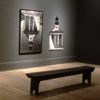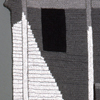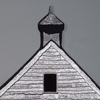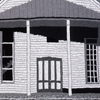Form Security Administration. 1993 Click on images to view project. |
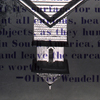 |
||||||||
Here, as in Home Rule (1992), photographs are paired with handmade facsimiles of their central motifs, knitted in cotton yarn. The source materials are four black-and-white photographs of churches in the southern United States, three taken by Walker Evans in South Carolina in 1936, when he was working for the federal government’s Farm Security Administration, and the fourth by Martha Roberts and commissioned by Standard Oil of New Jersey in 1948. Roberts’s picture is remarkably similar to Evans’s images and depicts one of the same churches. Hand-stenciled across the face of each photograph are quotations that introduce issues of nostalgia, style, and the passage of time. These texts allude to activities going on silently within and beyond the photograph’s frame and in the larger context of photography itself. Viewers read these photographs through a screen of language.
Evans often described his photographs as “pure record, not propaganda,” and he largely succeeded in shifting the reception of his work away from politics into a less polemical realm. And yet Evans—educated in the North, cosmopolitan, steeped in Baudelaire and Flaubert, and determined to advance as an artist—stylized and fetishized certain aspects of the architecture and culture he found in the South, presenting it as largely poor, rural, and locked in the past, and thus a ground for nostalgia even while alive in the present. “Evans is and was interested in what any present time will look like as the past,” he wrote of himself in 1962. What purports to be “pure record” is the artist’s own poetic endeavor and fictional construct.
By hanging the Evans and Roberts photographs upside down I sought to underline their highly formal structure, an element of their carefully constructed artifice. In addition, their juxtaposition with the right-side-up knitted motifs is an echo of the camera lens, which inverts a photograph’s subject as it casts it onto film. And the photographs’ contrast with the knitted reproductions—which, like the buildings themselves, are clearly laboriously handmade—undercuts the presumed transparency of photography as a means of picture making. Reinventing photographic icons in a different medium with its own associative power, Form Security Administration refocuses inquiry around documentation, photographic truth, and modernist practice.
|
